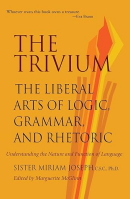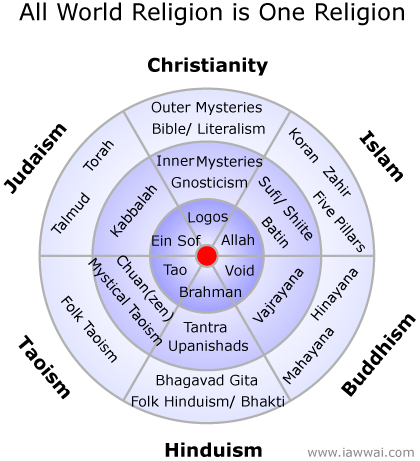 |
Full Title: | The Trivium The Liberal Arts of Logic, Grammar, and Rhetoric; Understanding the Nature and Function of Language |
|---|---|---|
| Author(s): | Sister Miriam Joseph, C.S.C., Ph.D. | |
| Publishing / Edition: | Paul Dry Books, 2002 |
 |
Full Title: | The Trivium The Liberal Arts of Logic, Grammar, and Rhetoric; Understanding the Nature and Function of Language |
|---|---|---|
| Author(s): | Sister Miriam Joseph, C.S.C., Ph.D. | |
| Publishing / Edition: | Paul Dry Books, 2002 |
Logic, grammar, and rhetoric consitute the trivium [...] Logic is the art of thinking; grammar, the art of inventing symbols and combining them to express thought; and rhetoric, the art of communicating thought from one mind to another, the adaptation of language to circumstance.This is contrasted with the Quadrivium:
| Aspect | Subject | General Meaning |
|---|---|---|
| Discrete Quantity | Arithmetic | The Theory of Number |
| Music | The Application of the Theory of Number | |
| Continuous Quantity | Geometry | The Theory of Space |
| Astronomy | The Application of the Theory of Space |
The intellect through abstraction produces the concept. The imagination is the meeting ground between the senses and the intellect. From the phantasms in the imagination, the intellect abstracts that which is common and necessary to all the phantasms of similar objects (for example, trees or chairs); this is the essence (that which makes a tree a tree or that which makes a chair a chair). The intellectual apprehension of this essence is the general or universal concept (of a tree or a chair).To speak more broadly, Robert Campbell mentions this same connection in reference to our ability to generalize into archetypes, and this was well understood by many ancient peoples. One could reasonably argue that such a concept is at the root of all religions, pointing to a "perennial philosophy", "primordial tradition", or "prisca theologia" underlying them. We are exiting Plato's cave and seeing the forms that project their shadows upon its walls.
A general concept is a universal idea existing only in the mind but having its foundation outside the mind in the essence which exists in the individual and makes it the kind of thing it is. Therefore, a concept is not arbitrary although the word is. Truth has an objective norm in the real.
A general concept is universal because it is the knowledge of the essence present equally in every member of the class, regardless of time, place, or individual differences. For example, the concept "chair" is the knowledge of the essence "chair," which must be in every chair at all times and in all places, regardless of size, weight, color, material, and other individual differences.
The real object (a tree or a chair) and likewise the corresponding percept and phantasm, is individual, material, limited to a particular place and time; the concept is universal, immaterial, not limited to a particular place and time.
Only human beings have the power of intellectual abstraction; therefore, only human beings can form a general or universal concept. Irrational animals have the external and internal senses, which are sometimes keener than those of humans. But because they lack the rational powers (intellect, intellectual memory, and free will), they are incapable of progress or of culture. Despite their remarkable instinct, their productions, intricate though they may be, remain the same through the centuries, for example: beaver dams, bird nests, anthills, beehives.
